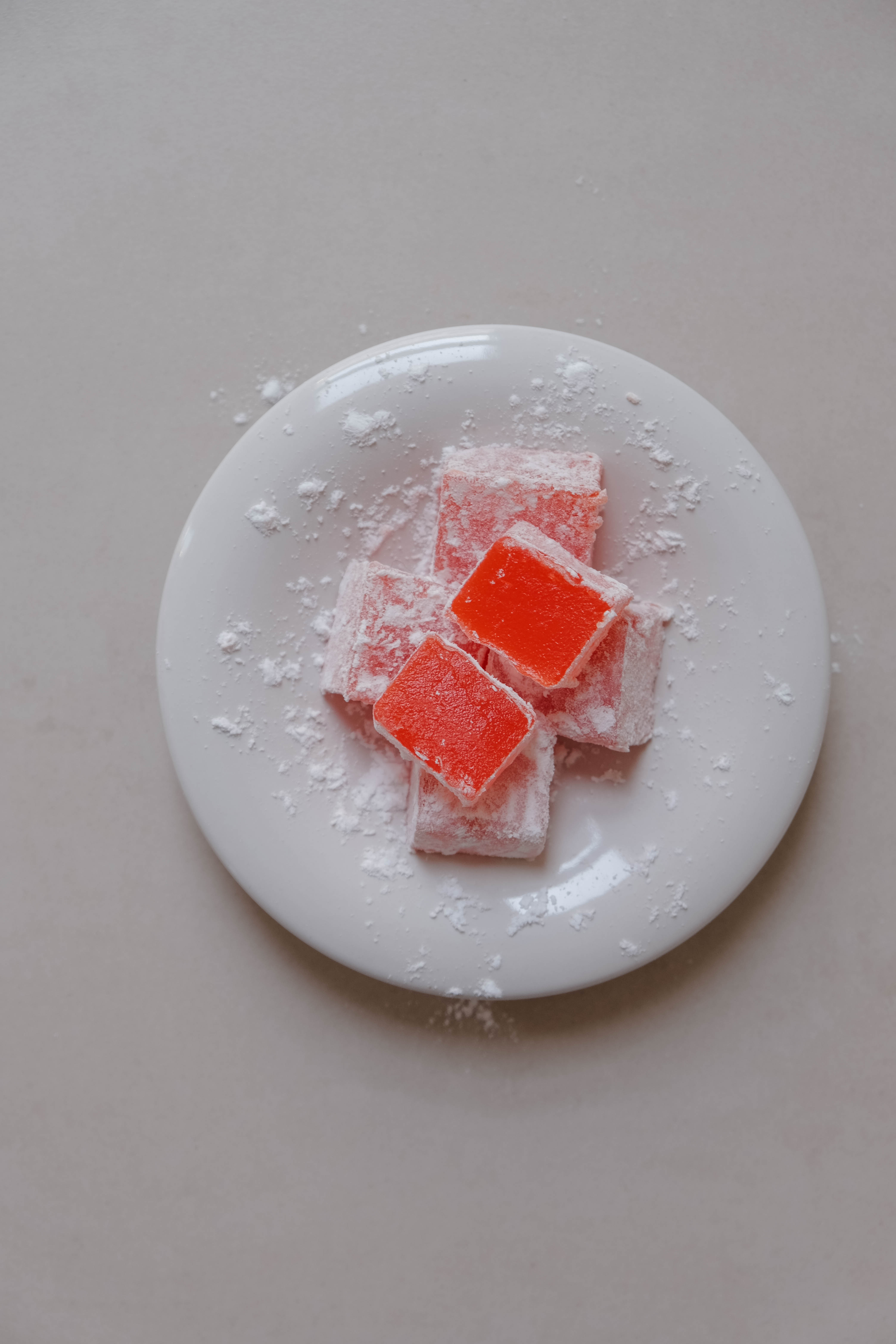Turkish Delight
The homemade version of Turkish Delight is superior to the shop bought, so good in fact, it might be worth betraying your family for...
Equipment
- 2 large saucepans
- 20x20cm square cake tin
Ingredients
For the Turkish Delight
- vegetable oil to grease
- 800 g caster sugar
- 1 tablespoon lemon juice
- 120 g cornflour
- 1 teaspoon cream of tartar
- 1 tablespoon rose syrup or 1 teaspoon of rose extract [see notes]
- 2-3 drops red food colouring
For the Coating
- 160 g icing sugar sifted
- 30 g cornflour sifted
Instructions
- Lightly grease a 20 x 20cm square baking tin with the vegetable oil and line with an oiled piece of baking paper [see notes].
- Pour 375ml of water, the sugar, and lemon juice into a large saucepan and place over a high heat. Stir the mixture as you bring it to the boil.
- Once the mixture is boiling, continue to stir constantly until an inserted sugar thermometer reads 115℃ [the soft ball stage - see notes]. Remove the sugar thermometer from the heat and set aside for a moment.
- In another large saucepan, add 500ml of water, the cornflour, and the cream of tartar and place over a low heat. Whisk constantly until you achieve a lump free, thick, gluey paste [see photos].
- Remove from the heat and gradually add the sugar mixture to the cornflour paste [you might need a friend to help with this!] and whisk constantly until completely combined.
- Return the pan to a low heat and simmer for about 1 hour, stirring every 10-15 minutes to prevent the mixture from catching.
- Once the mixture has reached a strong amber colour [see photos] add the rose extract and food colouring, and give it a good mix.
- Pour the mixture into the prepared tin and allow to set for at least 24 hours - the longer, the better [see notes].
- Once the mixture has properly set, combine the icing sugar and cornflour for the coating in a large bowl. Clean a space on your kitchen worktop and dust over a generous amount of the mixture.
- Turn out the set Turkish Delight onto the dusted area and carefully peel off the baking paper. Using an oiled knife or pizza cutter, cut into small squares and toss each one in the coating mixture.
- The Turkish Delight is best enjoyed fresh and outside in the snow to transport you to Narnia [see notes on storage]
Notes
- Preparation is really key here. Clear away all worktop clutter [it might get a bit messy] and make sure you have all ingredients measured out and to hand – you don’t want to be hunting for the rest of the ingredients in your cupboards while your sugar syrup overcooks!
- How much extract you use is really down to personal preference, and you can add as you go along. I wouldn’t add anymore than a teaspoon of rose extract, or a tablespoon of rose syrup but this still depends on the kind you use, so adjust accordingly - less is always more in my opinion!
- Double oiling might seem a bit excessive, but Turkish Delight is pretty sticky, therefore it’s much easier to turn out when the baking paper is also coating in a little bit of oil.
- The sugar syrup needs to reach the soft ball stage, which is possible to judge by eye, but some might find this quite intimidating. For peace of mind, I would recommend investing in a sugar thermometer as they can easily be found online and are very easy to use – make sure to buy one which clips to the pan so your hand isn’t stuck holding it up, at risk of being splattered with boiling hot sugar syrup!
- I would wait at least 24 hours for the Turkish Delight to fully set. There’s nothing stopping you from tasting it a couple of hours after making it, but I would definitely hold off from coating it for as long as possible. Turkish Delight has a nasty habit of soaking up the cornflour and icing sugar and becoming wet, especially if it isn’t set properly.You’ll also want to avoid storing in an airtight container and in humid areas. Ideally, it should be eaten freshly coated, rather than stored away.
